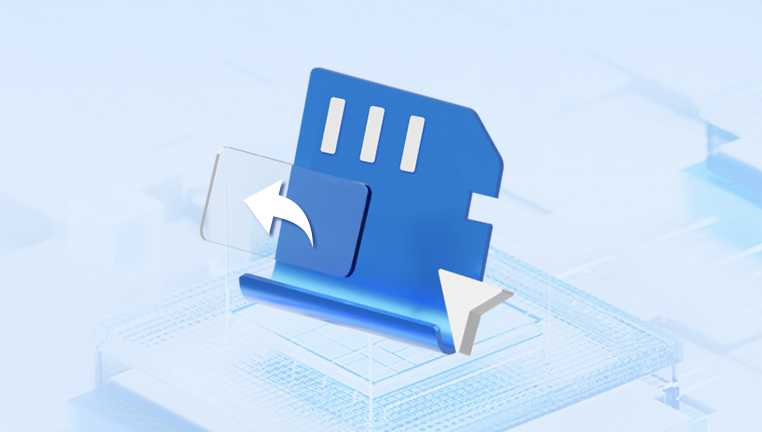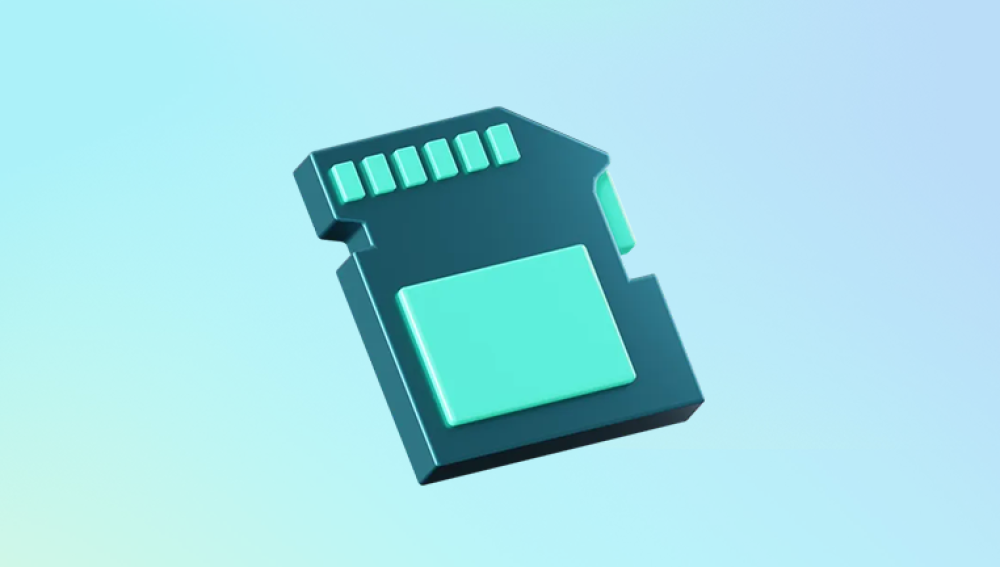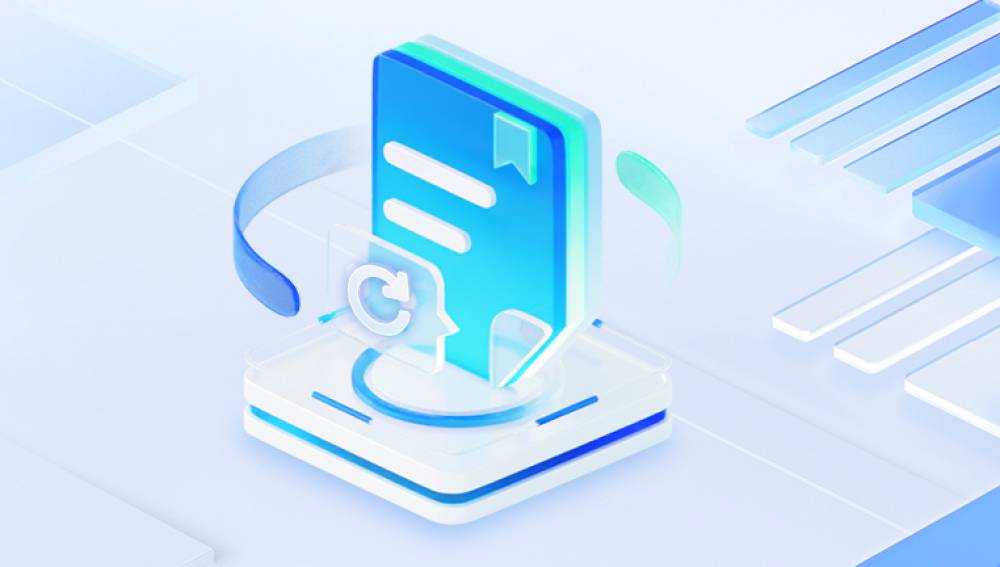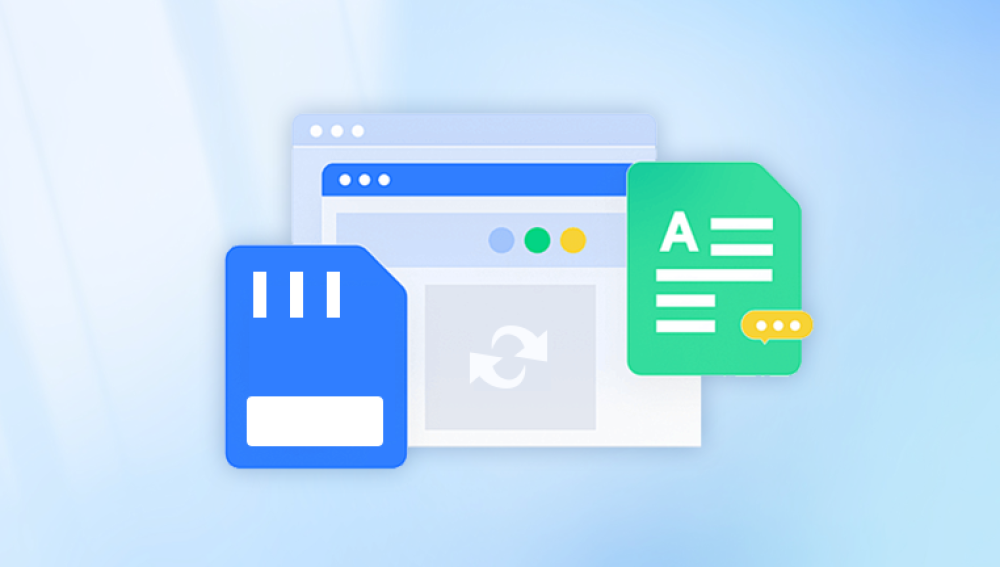SD cards are widely used in cameras, smartphones, tablets, drones, and other portable devices to store photos, videos, documents, and other important data. Despite their convenience, SD cards are susceptible to accidental deletion, formatting, corruption, or physical damage. Losing files from an SD card can be stressful, especially if they are irreplaceable memories or critical work files.
The good news is that deleted files are often not permanently lost. When you delete a file from an SD card, the data is usually marked as free space on the card rather than being erased immediately. This means recovery is possible if action is taken quickly and proper tools are used.
Soft Deletion – When you delete files normally, the SD card marks the space as available but doesn’t immediately remove the data. This allows recovery programs to locate and reconstruct the files.

Formatting – Even if the SD card has been formatted, most of the data can still be recovered unless it has been overwritten. Quick format only erases the file table, leaving the actual data intact.
Physical Damage or Corruption – Corrupted SD cards or those with bad sectors may require specialized recovery techniques or software to restore data.
Overwriting – Once new files are written to the SD card, they may overwrite deleted data, making recovery more difficult. Acting quickly is critical.
Free Software Options for SD Card Recovery
There are several free programs available to restore deleted files from SD cards. Here are some of the most reliable options:
1. Drecov Data Recovery
Drecov Data Recovery works by scanning the storage space of your SD card for deleted files. When a file is deleted, it is not immediately erased from the card. Instead, the storage space is marked as available, allowing recovery programs to reconstruct the data before it is overwritten. Panda’s intuitive interface simplifies the process, making it accessible for both beginners and experienced users.
To restore deleted SD card files using Drecov Data Recovery, start by connecting your SD card to a computer via a card reader. Install Drecov Data Recovery on a drive other than the SD card to prevent overwriting lost data. Launch the program, select the SD card as the target device, and choose between a Quick Scan for recently deleted files or a Deep Scan for older or more complex recoveries.
Once the scan is complete, Drecov Data Recovery displays a list of recoverable files, including images, videos, documents, and audio files. Users can preview the files to verify their integrity before restoring them. Select the desired files and save them to a different location on your computer to ensure data safety. After recovery, you can transfer the files back to the SD card if needed.
Using Drecov Data Recovery ensures a safe, free, and efficient way to recover lost SD card files without risking further data loss. Its powerful scanning engine and user-friendly interface make it a reliable choice when other methods fail.
2. PhotoRec
Overview: PhotoRec is a free, open-source recovery tool that works on Windows, Mac, and Linux. It specializes in recovering multimedia files from SD cards.
Key Features:
Supports hundreds of file formats
Works on corrupted or formatted SD cards
Can recover files even from partially damaged media
Steps to Use PhotoRec:
Download and extract PhotoRec.
Launch the program and select the SD card.
Choose the partition type and filesystem.
Select the types of files to recover.
Choose a destination folder on your computer (not the SD card).
Start the recovery process and wait for the program to finish.
3. Disk Drill (Free Version)
Overview: Disk Drill offers a free version for Windows and Mac that allows limited data recovery from SD cards.
Key Features:
Quick scan and deep scan
File preview before recovery
Supports FAT32. exFAT, NTFS, HFS+, and APFS
Recover files from SD cards, USB drives, and internal drives
Steps to Recover Files with Disk Drill:
Download and install Disk Drill on a drive other than the SD card.
Connect your SD card to the computer.
Launch Disk Drill, select the SD card, and click Search for lost data.
Preview recoverable files and select those you want to restore.
Recover files to a safe location.
4. MiniTool Power Data Recovery Free Edition
Overview: MiniTool offers a free edition that supports SD card recovery with some file size limitations.
Key Features:
Easy-to-use interface
Supports multiple file systems
Quick and deep scan options
Allows file preview before recovery
Steps to Use MiniTool:
Download and install the free edition on a different drive.
Insert the SD card and launch MiniTool.
Select the SD card and choose Undelete Recovery or Damaged Partition Recovery.
Scan for lost files, preview, and recover to a safe location.
Step-by-Step Recovery Process
Regardless of the software you choose, the recovery process generally follows these steps:
Stop Using the SD Card – Prevent overwriting by removing it from the device or stopping file transfers.
Use a Card Reader – Connect the SD card to your computer using a reliable card reader.
Install Recovery Software on a Separate Drive – Avoid installing recovery software on the SD card itself.
Select the SD Card in the Program – Choose the SD card as the target for scanning.
Scan for Lost Files – Start with a quick scan; if files aren’t found, perform a deep scan.
Preview Recoverable Files – Most programs allow previewing images, videos, and documents.
Recover Files to a Safe Location – Always restore files to your computer or another storage device, not the SD card.
Recheck and Backup – Verify recovered files and create backups to avoid future loss.
Troubleshooting Common Issues
1. Files Not Found
Ensure you ran a deep scan instead of a quick scan.
Try multiple recovery programs; different algorithms may detect different files.
2. Corrupted Recovered Files
Some files may be partially overwritten. Use software with file repair features.
Video and image files may require separate repair tools if corrupted.
3. SD Card Not Recognized
Check the card reader and USB port.
Try another computer.
Use disk management tools to verify the card is readable.
4. Recovery Limits
Free versions of some programs may limit the total recoverable size. Consider upgrading if needed.
Preventing Future Data Loss on SD Cards
Regular Backups – Copy important files to your computer or cloud storage.
Avoid Formatting the SD Card Frequently – Only format when necessary.
Safely Eject the Card – Prevent corruption by always ejecting properly.
Use High-Quality Cards – Low-quality SD cards are more prone to failure.
Enable Read-Only Protection – Lock the card to prevent accidental deletions.
Organize Files and Folders – Reduces accidental deletion of critical data.
Additional Tips
Multiple Recovery Attempts: If one software fails, try another program.
Deep Scan First for Important Files: Quick scans may miss files deleted a long time ago.
Recovery from Camera vs. Computer: Some cameras may not allow file recovery if files are deleted directly on the camera. Use a card reader for best results.
Avoid Writing New Files: Stop using the SD card after noticing file loss.
When Free Programs May Not Be Enough
While free programs are powerful, certain scenarios may require professional solutions:
Severely Corrupted or Physically Damaged Cards – Requires specialized tools and lab services.
Encrypted SD Cards – Recovery may be limited if encryption is enabled.
Large-Scale Recovery Needs – Professional software may handle large volumes more effectively.
Even in these cases, starting with free recovery tools is advisable because they are safe, non-destructive, and often sufficient for most accidental deletions.
Recovering deleted files from an SD card for free is entirely possible using a combination of reliable software tools, proper recovery procedures, and preventive practices. Programs like Recuva, PhotoRec, Disk Drill, and MiniTool Power Data Recovery provide powerful free solutions for retrieving lost photos, videos, documents, and more.
Key principles for successful recovery include acting quickly, avoiding overwriting the SD card, using a separate drive for software installation, and scanning thoroughly. Once files are recovered, implementing backup strategies and safe handling practices ensures that future data loss can be avoided.




